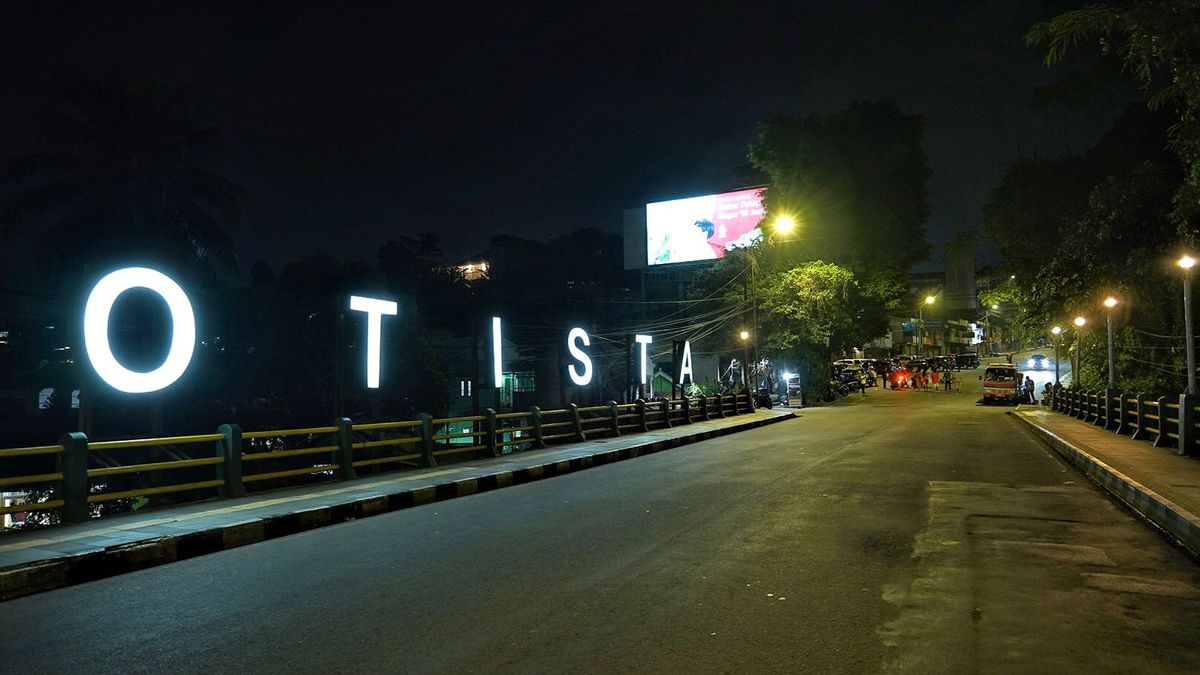BOGOR - The government of Bogor City, West Java designed the Otto Iskandardinata Bridge building (Otista) which was recently revitalized to last 80 years to 100 years like the previous building by the colonial government hundreds of years ago.
Head of the PUPR Service, Rena Da Frina, said the bridge's new construction had gone through careful calculations including its resistance to loads and vibrations over the next 100 years.
"The estimate is that the bridge (hold) is 80 to 100 years. Later there will be at most repairs to the railing, or something. But if the bridge has been designed (hold) 80 to 100 years," said Rena, quoted by ANTARA, Sunday, December 18.
Rena explained the results of deliberations with various parties, the Bogor City Government took the option to maintain the bridge arch of the Dutch colonial period as a form of heritage.
The Otista Bridge, which was originally a traffic block in the one-way system (SSA) route in the city center, has now been widened to 22 meters with a bridge body covering an area of 17 meters and the rest is pedestrians. This revitalization project uses the West Java Province aid budget of IDR 101 billion.
"That's agreed. For that there are several planning adjustments, including the level of elevation, the height," he said.
This was when the planning was made, when the curves were all dismantled from the bridge body there was an increase of 1.8 meters, so the Otista bridge building only had a slope of 5 degrees.
The arch, which originally supported the Otista bridge for hundreds of years, will now be used as a new tourist attraction in Bogor City.
"It can be seen via the inspection ladder below, so it is left as a tourist attraction there. He does not burden and burden the new bridge structure. So he stands alone, so it's just a decoration," explained Rena.
In addition, Rena explained that the structure is also that the Otista Bridge is designed for tram transportation modes, so it can withstand vibrations and high tonnage. Currently, the tram channel on the bridge body is temporarily closed using hotmix.
"So when the tram is there, it's just a matter of opening the hotmix, so there's a straight lane of about 5 cm," he said.
SEE ALSO:
In the future, said Rena, with the widening that has been carried out, traffic barriers are expected to only occur when there is still public transportation (angkot) tightening or a parking car on the edge of a bridge or Otista Street.
"At least the obstacle is if there is angkot tightening, or there is a parking lot on the edge. Now, later there will be friends from the Transportation Agency who have business for that, including for parking at Warbo, we have prepared the structure, for the next mechanism there will be a then and a Dishub," said Rena.
The English, Chinese, Japanese, Arabic, and French versions are automatically generated by the AI. So there may still be inaccuracies in translating, please always see Indonesian as our main language. (system supported by DigitalSiber.id)


















